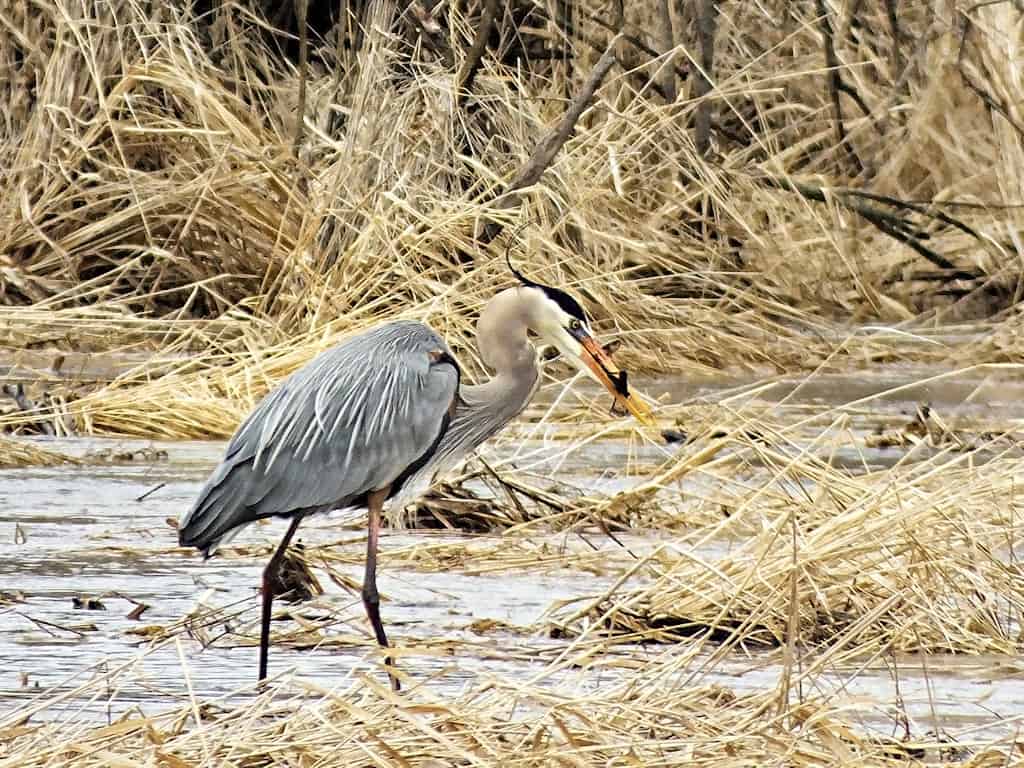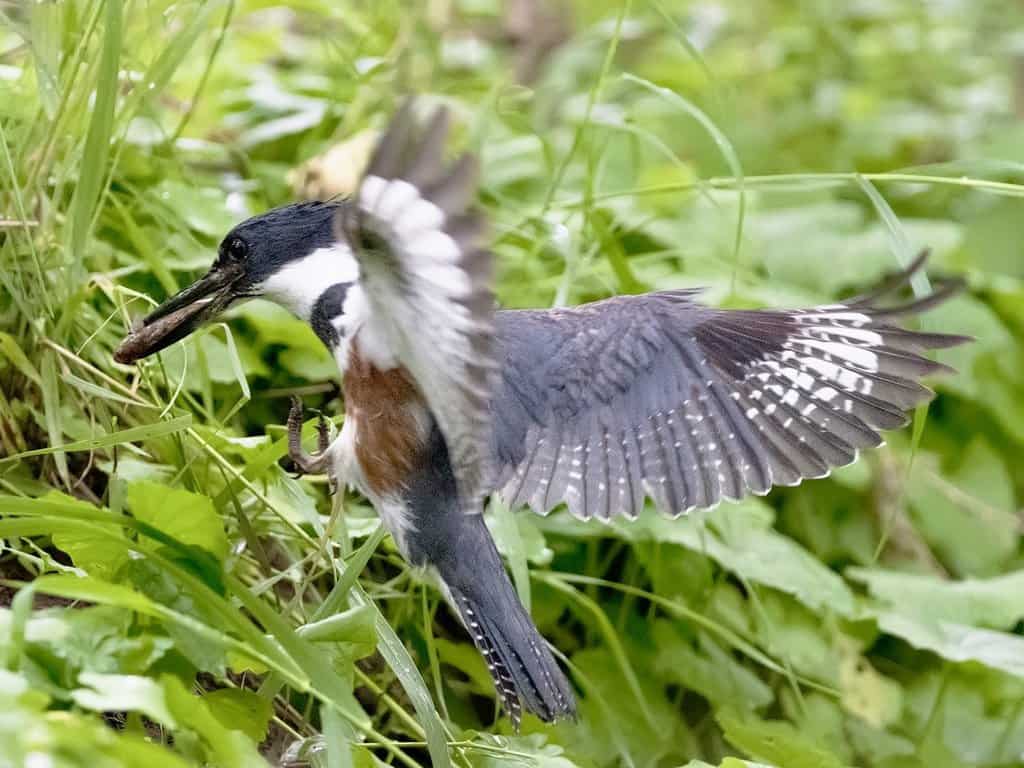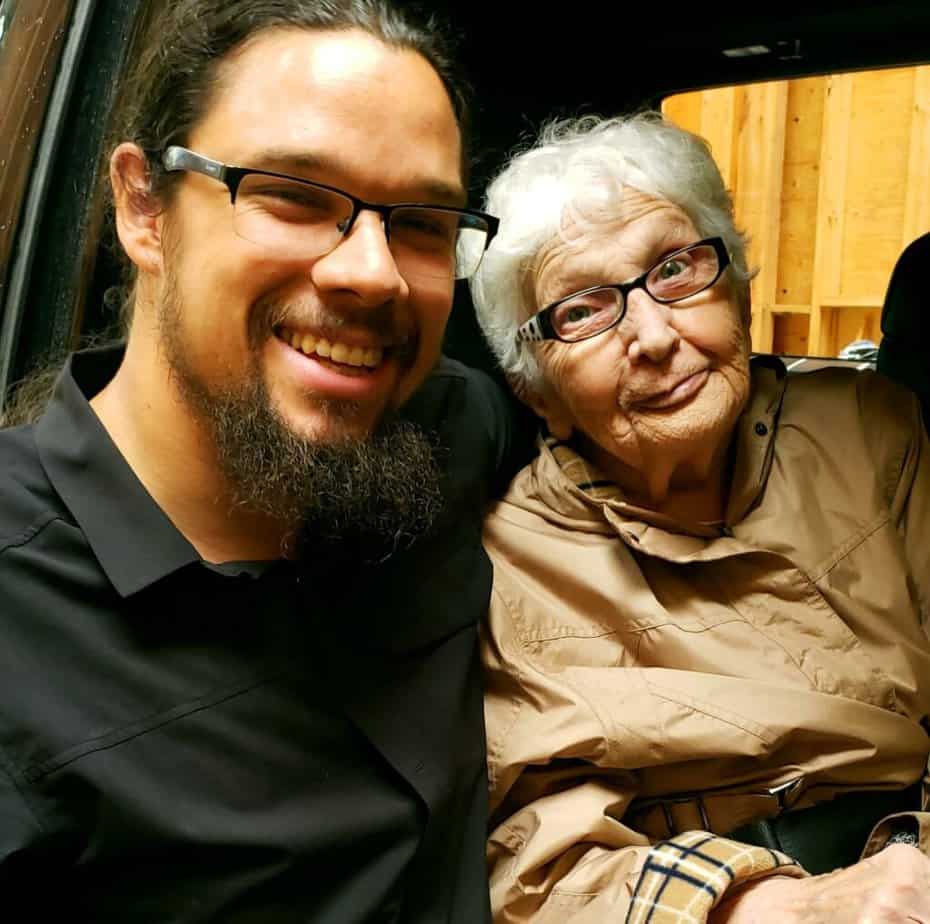Indigenous species’ names contain an abundance of precious information
Peterborough Examiner – January 27, 2023 – by Drew Monkman
Joe Pitawanakwat is on a rescue mission: to catalog the names of birds in Anishinaabemowin, the Ojibwe language, before knowledge of these names – and what they mean in English – disappears forever. He and his collaborators, Andrés Jiménez Monge and Junaid Shahzad Khan, have already gathered about 170 names but hope to find many more and put them together in a guide book.
Pitawanakwat, who now lives in Peterborough, is from Wiikwemkoong First Nation on Manitoulin Island. Much of his knowledge of bird names comes from his travels into hundreds of communities across North America where he teaches plant medicine.
Joe explained to me that part of rediscovering names involves genealogy and matching an Anishinaabemowin name to its English counterpart. In Ojibwe culture, people are often named for what is happening in nature when they are born. This can include things like weather and bird phenomena. “Pitawanakwat”, for example, refers to clouds. A recent bird name the team has tracked down means “the tail that blocks.” One hunch is that it describes the northern goshawk, a raptor known for its long rudderlike tail that provides superb aerial agility, even when flying through a dense forest.
Unlike most English names, Anishinaabemowin names tell us a great deal about the bird itself. In a recent interview with CBC News, Pitawanakwat explained that “the names are all describing unique characteristics like flight patterns, nesting behaviours and sometimes physical characteristics.” He also said that the origin of some names remains a mystery. For instance, the American goldfinch is called Aginjibagwesi which means “the one who counts leaves.”

Evocative examples
Pitawanakwat and his co-researchers recently completed a Birds Canada pamphlet that highlights 15 birds with their Anishinaabemowin names. However, because language is extremely diverse, different words or variations are often used locally for the same species. This was the case in English, too, before the names were standardized. The names used in the pamphlet and upcoming guide therefore represent the choices of the authors. Here are eight examples.
1.Moowashiki’osi (Moo-shi-ki-‘osi) or American bittern. The name uses onomatopoeia to mimic this wetland dweller’s deep, gulping sound. It also describes the quality of the vocalization, as though the bird is singing underwater and what we hear is the sound that bubbles out from beneath.
2. Agaagaagishiip (Agaa-gaa-gih-sheep) or double-crested cormorant. “Gaagaagishii” is the name for the common raven. “Shiip” is part of the word for duck. The name is therefore describing the raven-like colour and the duck-like behaviour.
3. Aninishiip (Ah-ni-ni-sheep) or mallard. This name simply means a common duck. “Inini” is a prefix applied to all things that are unique and ubiquitous. “Inniwish” is common milkweed and Ininaatik is a maple tree.
4. Meskiwaanaanisii (Mess-kwa-naan-i-see) or red-tailed hawk. “Meskwa” describes red and relates to the lifeblood in our veins. “Aan” speaks to the force responsible for change. When meskiwaanaanisii changes direction in flight, the tail is where the change comes from. “Naanisii” is the word for tail.
5. Aandeg (Aan-dheg) or American crow. “Aan” refers to a change that has occurred, while “dekaa” is the word for cold. Crows returning in the spring and even playing together is a sign of seasonal change. The maple sap is running and the cold days are over.
6. Giishmaantikonh (Geesh-maan-thay-conh) or belted kingfisher. “Giish” is part of the word referring to cutting cleanly through something. This was once a common last name in Indigenous communities. The name therefore describes how the kingfisher pierces cleanly through water without making a splash.

7. Amesikoowabineshiinh (A-mey-si-koo-bi-nay-sheenh) or northern cardinal. “Meskwa”, the word for red, is combined here with “bineshii” which is the term used for flying animals. The name literally means red bird.
8. Ishkodebineshiinh (Ish-ko-dhay-bih-nay-sheenh) or scarlet tanager. “Ishkode” is the word for fire. This name denotes the unique red of scarlet tanagers that includes tones of orange. This is therefore the bird that looks like fire.
Pitawanakwat knows there are bird names he has missed and welcomes any help the public can provide. For more information and to order copies of the pamphlet, go to https://www.creatorsgardenmarket.ca/ or email birds@creatorsgarden.net
Plant medicine
At only 31, Pitawanakwat has already spent years learning about “Anishinaabe-mshkiki”, or plant medicine. Much of his knowledge comes from his grandmother, Tackla Pheasant. She would tell him stories about the plants that she and her own mother harvested in the woods and meadows of Mnidoo Mnising, or Manitoulin Island. Pitawanakwat recalls bringing his grandmother a pile of leaves of maybe 30 or 40 different tree species. She knew every single one by its Anishinaabemowin name. He also said that his grandmother was raised — and raised most of her kids — without access to a hospital. This meant that when it came to sickness and injury, she had to know what plant medicine to use.

When three of the treasured keepers of plant teachings at Wiikwemkoong First Nation died, Pitawanakwat dropped out of college to devote himself to learning from his grandmother. He understood how precious her plant knowledge was — and what was at stake if it was lost. It haunts him, however, that some names may have already disappeared forever. He has a list of plants that he can’t address by name and no one seems to know what they’re called. This matters because their uses are often woven into their names. It means these plants may never be able to provide their gifts of medicine or food.
In a 2021 interview on CBC Radio’s “Back to the Land” Pitawanakwat talked about two of his favourite plants. One is “Jiichiigominaawashk” or tall white lettuce. “The plant has milk that we use to get rid of warts — jiichiigom.” Another is “Miskwaabiimagoons” or dogwood. “The dogwoods we use to help with arthritis.”
Names matter for another reason, too. Whenever Pitawanakwat stops to examine or harvest a given species, he always introduces himself to the plant in Anishinaabemowin. “Learning about plant medicine, you need to be able to address the plant by its name,” he said. “It’s just respect, like a simple courtesy that you extend to every other person.”
Pitawanakwat and his wife Kristy have a small business in Peterborough called Creator’s Garden that offers workshops about plant medicine. With his team of biologists, he also provides vegetation assessments and ecological restoration planning and implementation. “Tending to the creator’s garden, that is our job. That’s what we learn about and teach about,” Pitawanakwat said.
A dual crisis
Knowing and preserving Anishinaabemowin names is vitally important as we face a dual extinction crisis. Not only are we losing species, but we are losing Indigenous languages at an unprecedented rate. Quite often, both are occurring in the same geographical area. The hot spots of language diversity often coincide with the hot spots of species diversity. What’s more, when Indigenous languages are lost, so is knowledge of flora and fauna.
Some conservationists and climate scientists believe that efforts to preserve these languages is also part of the solution to protecting endangered species. Indigenous languages contain world views that offer solutions. When we lose indigenous languages and cultures, we lose the understanding of ways in which ecosystems could be managed and protected.
“Anishinaabemowin recognizes the land as living and — probably more startling to a lot of people — as having its own agency. It’s embedded within our languages to recognize that the planet has a say and that it is trying to tell us something,” said Deborah McGregor, an associate professor at York University and member of Whitefish River First Nation in Ontario. “Climate change is the Earth trying to tell us what’s happening to her.”